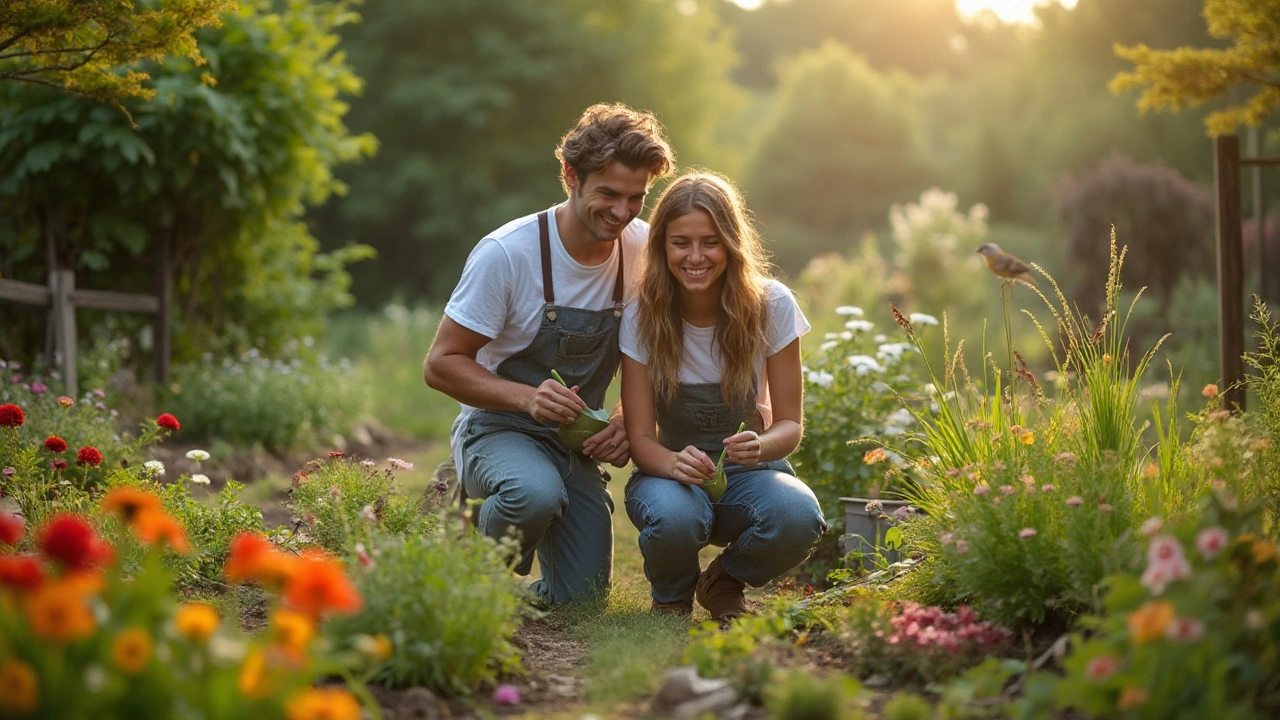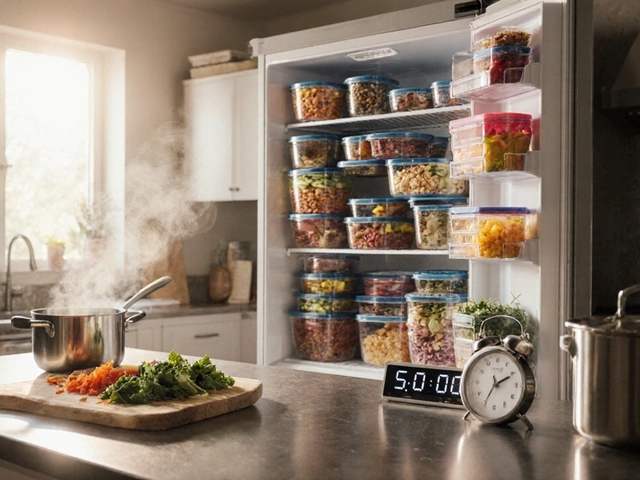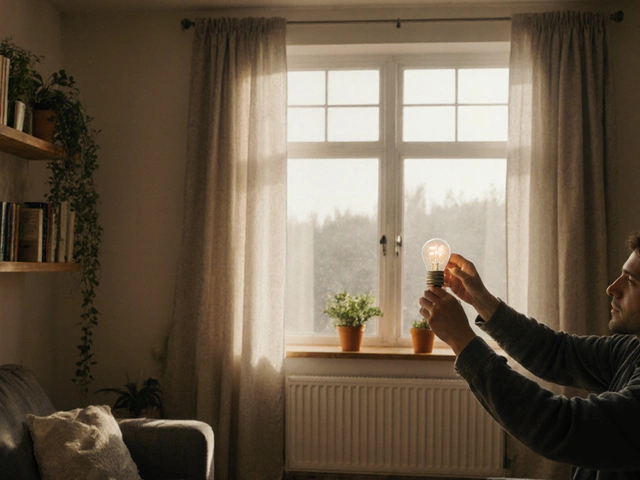So, you've decided to dig your fingers into gardening? Awesome! A garden doesn't need to be grand; it can be as simple as a few pots on a balcony. Before you start planting, it's essential to have some groundwork (pun intended) laid out.
Kicking off your own garden isn't just about digging up some soil and throwing seeds around. That's the beginner's mistake many make. Fundamentally, it's about understanding your environment, meeting plant needs, and a sprinkle of patience. Stick around, and let's explore how to take those first steps into this earthy adventure.
- Identifying Your Gardening Space
- Choosing the Right Plants
- Understanding Soil and Fertilization
- Organizing Tools and Resources
- Watering and Maintenance Tips
- Dealing with Pests and Diseases
Identifying Your Gardening Space
Before you start the delightful journey of gardening, it's crucial to pick the right spot for your home gardening endeavors. This decision will influence the types of plants you can grow and the success rate of your garden. Considerations about light, wind, and accessibility are essential. Firstly, assess the sunlight situation. Most vegetables and flowering plants thrive in full sun, which translates to at least six hours of direct sunlight daily. However, if your space receives partial shade, you'll need to choose shade-tolerant varieties such as ferns or hostas. Do take a moment to observe your space throughout the day to see patterns of light and shadow. This not only helps in plant selection but also affects plant arrangement within your garden space.
Accessibility is another factor that should not be overlooked when it comes to beginner gardening. Keep in mind that a garden that's hard to reach is a garden that's hard to maintain. You'll want an area that you can easily get to with your tools and water source, particularly during the hot months when frequent watering will be necessary. If you have the luxury of choice, think about the proximity to your kitchen; being able to pop out and grab fresh herbs while cooking can be a delightful perk. Balconies and window boxes are fantastic if ground space is limited. They bring the beauty and utility of gardening right to your fingertips, quite literally.
"The poorest man in his cottage may bid defiance to all the forces of the Crown. It may be frail; its roof may shake; the rain may enter; the wind may blow through it; but the King of England cannot enter; all his force dares not cross the threshold of the ruined tenement."—William Pitt, emphasizing the personal space and sanctuary provided by your garden.
Including wind in your considerations can prevent future gardening woes. Strong gusts can damage plants, especially tender young ones. If your chosen gardening space is windy, consider installing a windbreak of some sort, be it a fence, trellis, or strategically placed shrubs. The microclimate created within your space will benefit not only the plants but your gardening comfort too. Finally, don’t be disheartened if space is tight. Dozens of fruits and vegetables flourish in pots and raised beds, using vertical gardening strategies with hanging pots or wall-mounted planters. Embracing these innovative solutions can transform every nook into a lush sanctuary. According to a 2022 study by Horticulture Magazine, urban dwellers cultivating vertical gardens increased their harvest by 30% compared to traditional methods. With these insights, you're well on your way to having a thriving, accessible, and sustainable gardening experience.
Choosing the Right Plants
Diving into gardening begins with the excitement of picking the right plants for your space. It's akin to adopting new pets; each plant has its own set of needs and quirks that you'll want to understand before they become part of your home. For new gardeners, starting with low-maintenance plants is advisable, as they are forgiving and give you time to learn the ropes. The key is matching plants to your garden's specific conditions—light, temperature, and space constraints.
Sunlight is a crucial factor that cannot be ignored. Not all plants enjoy basking in the sun all day. Some thrive in partial or full shade. For instance, if your home gardening spot gets ample sunshine throughout the day, consider sun-loving plants like tomatoes and marigolds. On the other hand, if the area is shadier, ferns and hostas might be more suitable choices. Identifying your environment's natural light levels is an important step that helps dictate plant selection. Mistakes in this regard can lead to unhappy plants that just don't perform well.
Don't forget about climate. In a city like Melbourne, the temperate climate offers a fantastic range for gardening. Seasonal changes and rainfall patterns should factor into your choices. Hardy plants that can withstand both heat and occasional frosts, such as lavender and rosemary, are often ideal for beginners. Utilizing local gardening resources or speaking to experienced gardeners in your area can also provide insights into what thrives locally. A solid understanding of your region's unique challenges is half the battle won.
Consider the purpose of your garden. Are you looking to grow vegetables, herbs, ornamental flowers, or perhaps a mix? Each type offers different levels of satisfaction and challenges. Vegetables like lettuce and radishes offer a quick payoff, with mere weeks from planting to harvest. If aroma and flavors delight you, start with herbs like basil and mint which are not only hardy but also provide culinary benefits. Flowers bring aesthetic beauty and can significantly brighten up any space with color and life.
To help guide you through the process, here's an insightful nugget from the Royal Horticultural Society:
"Select plants that suit the available conditions and your available time to avoid frustration. Not every plant grows everywhere, and that understanding can make all the difference in the joy of gardening."This piece of advice supports a critical aspect of gardening, which is patience and understanding of plant requirements. Rushing decisions may lead to unwarranted disappointments.
Investment in research can save you headaches later on. A rewarding and sustainable garden arises from planning and selection done right. Online databases or gardening books can provide specific details and care instructions for different plants. Maintaining a diary or note of what you plant and when can also be invaluable, especially for tracking successes and those lessons learned from mistakes. Emphasizing plant care and learning from every failure is your path to mastery.
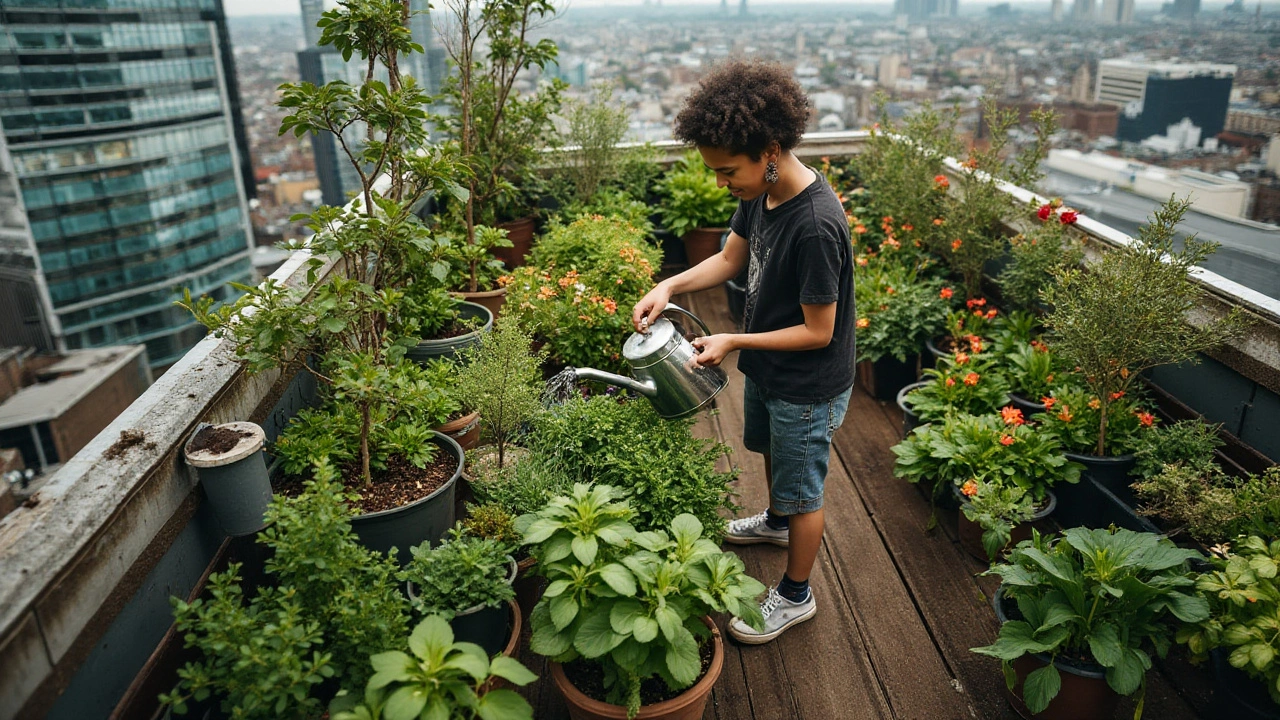
Understanding Soil and Fertilization
Diving into the nitty-gritty of soil health is where the magic of gardening truly begins. Understanding soil is foundational, acting as the bedrock for nurturing the plants of your dreams. You may think dirt is just dirt, but there's more to it! The soil is a bustling hub of activity, filled with microorganisms that break down organic material, contributing to the fertility of the earth. The first step in understanding your soil is to determine its type: sandy, clay, silt, loam, or a mixture thereof. Conducting a simple hand test can reveal the composition—loamy soil, for instance, feels crumbly and moist, and it’s often considered the gold standard for gardeners. Remember, each soil type possesses unique properties affecting water retention and nutrient availability.
Once you've identified what you're working with, it's time to think about fertilization. Plants, much like us, crave a balanced diet. They rely on nutrients like nitrogen, phosphorus, and potassium, usually abbreviated as NPK. It's worth investing in a basic soil test kit which can guide you in making decisions about necessary amendments. For those championing organic methods, consider using compost as a rich source of nutrients. Compost is essentially decayed organic matter, and it plays a pivotal role in enriching the soil. As gardening guru Monty Don puts it,
"Compost, because of its vital nature, is the alchemy of the garden."This black gold nurtures your garden, enhancing soil structure, drainage, and nutrient availability.
Getting into the specifics, soil pH matters a lot to plant health. Most plants appreciate a slightly acidic to neutral pH, typically between 6 to 7. This range optimizes the availability of essential nutrients. Deviations can cause nutrient lockout, a condition where plants cannot absorb nutrients, regardless of their presence. To adjust pH levels, adding lime can neutralize acidic soil, while sulfur reduces alkalinity. To geek out a bit further, moisture retention is equally pivotal. Loamy soil is often hailed as superb for its balance, but others might need help. Mixing in organic matter, such as manure or peat moss, can improve this, enhancing both retention and drainage.
A common question often pops up: How frequently should gardens be fertilized? Well, the answer isn’t set in stone, but rather it roots in the type of plants being grown and the fertility of your soil. Generally, during the growing season, feeding plants every 4-6 weeks with a balanced fertilization can be beneficial. Liquid fertilizers are absorbed quickly, acting as a rapid boost for growth. On the other hand, slow-release granules offer a steady, prolonged nutrient supply. An essential yet often overlooked tip is to water your plants before applying fertilizer to prevent root burn.
To wrap up this earthy narrative, achieving a thriving garden comes from a symbiotic understanding between you and the soil beneath. As you develop this knowledge and nurturing relationship, you'll likely notice a change in how your garden flourishes. Treat every aspect of the soil and fertilization process as part of a journey, not just a task. In the words of a wise gardener, "Take care of the soil, and the soil will take care of you."
Organizing Tools and Resources
When you're embarking on a gardening journey, the right tools and resources can make all the difference. Think of a gardener's tools as an artist’s brushes—they are extensions of creativity and capability. To begin, you'll need the basics: a sturdy shovel or trowel for digging, a rake for smoothing out surfaces, and a pair of pruning shears for managing plant health. Each of these tools has a specific role, allowing you to tackle various gardening tasks efficiently. For beginner gardening, keep it simple but ensure quality. Investing in reliable tools means they will last longer and perform better, saving you from frustrations along the way. Initially, an inexpensive way is visiting local garage sales or checking online marketplaces, where people often clear out gently used items.
Having an organized setup for storage is also crucial. It's surprising how a well-arranged shed can enhance your gardening experience. Ensure that your tools are easily accessible; you don't want to be digging through a heap of stray odds and ends every time you need a specific tool. Shelves and hooks can keep everything in place, and labels can transform the chaos into a system of order. Consider creating a small “Gardener's Journal” to document where each tool is kept, any repair needs, or notes about different resources like mulch or compost. This manner of deliberate organization is the backbone of success in home gardening.
Don't forget the resources that extend beyond physical tools. Books and online platforms provide a treasure trove of knowledge for the novice gardener. There's an endless wealth of information, from understanding the best planting seasons for different species to strategies on plant care coordination. Be proactive in soaking up this knowledge—spend time at your local library or join gardening forums online. There's a community of garden enthusiasts all too willing to share their tips and tricks. Remember what Monty Don, the acclaimed British gardener, once said,
“The more you garden, the more you learn.”This isn't just advice; it's an encouragement to dive into available resources and make them part of your toolset.
Should you decide to step into advanced gardening techniques at any point, you'll find additional tools necessary. This could include a soil pH tester, specific fertilizer applicators, or mini greenhouse setups. These are part of evolving your plant care strategies as you become more confident and curious. As your garden grows, so might your curiosity. As a result, let your toolkit—and your knowledge—grow alongside. Each season presents new challenges and triumphs, with each year adding more depth to your gardening saga.
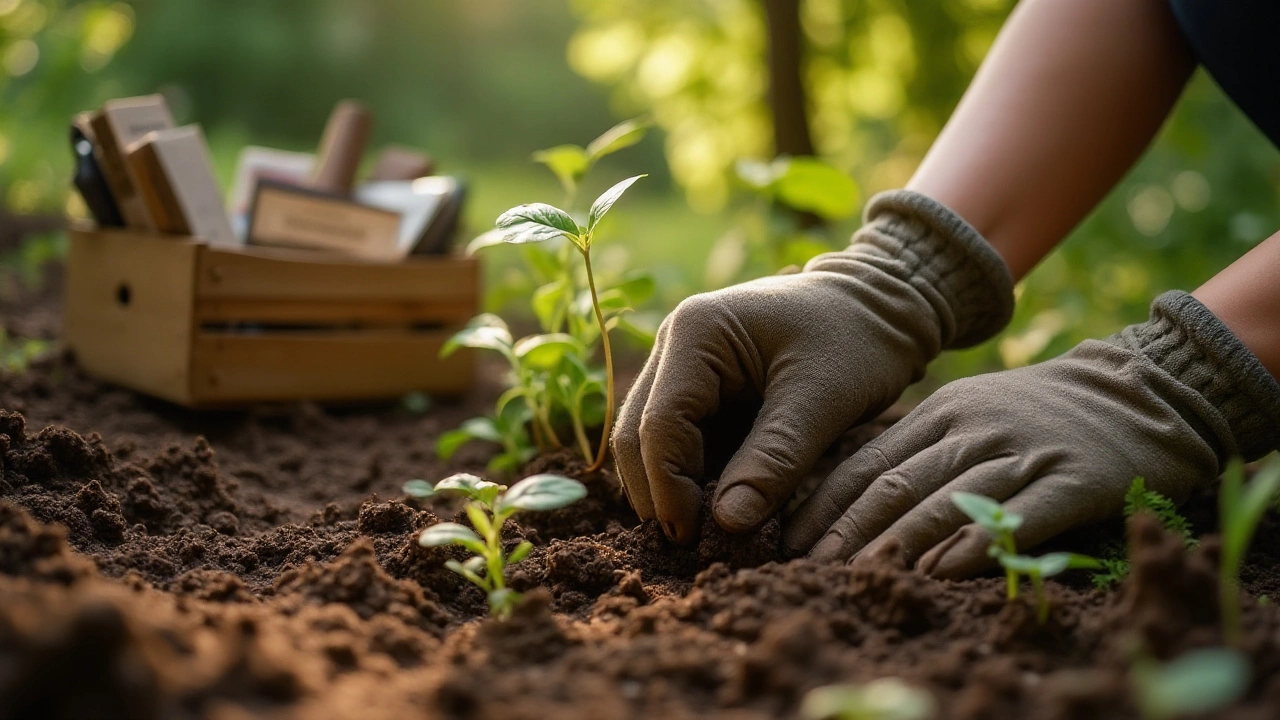
Watering and Maintenance Tips
Watering forms the lifeblood of any garden, yet it’s surprisingly easy to get wrong. It's a fine balance; too little, and your plants wither, too much, and they could drown. It's like Goldilocks, aiming for just right. Begin by understanding the hydration needs of each plant. Home gardening often involves a mix of species, some that crave moisture and others that prefer drier conditions. For instance, succulents and cacti thrive with minimal watering, whereas vegetables and foliage-heavy plants usually need frequent moisture.
One of the best ways to assess whether your plants require water is the soil test. Stick a finger about 5 centimeters into the soil. If it feels dry, it's time to water. This isn’t an exact science, but it gives a good indication. It's worth investing in a moisture meter for more precision.
According to horticulturalist Kevin Espiritu, "Overwatering is the number one way that beginner gardeners kill their plants. Checking your soil moisture is more reliable than relying on a schedule."Implement a watering schedule, but be flexible. Weather conditions can alter how often your plants need hydration.
To make watering efficient, consider drip irrigation for larger gardening spaces. It delivers water directly to the base of each plant, conserving water and ensuring deep penetration into the soil. It's also crucial during different seasons to adapt your practice. During the warmer months, early morning is ideal to minimize evaporation, whereas, in cooler times, it's better to water in the mid-morning.
Maintenance Routines
Keeping your home garden in top shape involves regular maintenance checks. Start by establishing a weeding routine, which is especially crucial if you have a sizable plot. Weeds compete with your plants for nutrients and can stunt their growth. While there are chemical solutions available, manual removal or mulching is a safer option for a beginner gardening enthusiast.
Inspecting your garden regularly helps in catching issues like pests and diseases early. Remove dead or diseased growth swiftly to prevent the spread. Pruning is another important aspect of garden upkeep. It not only maintains the health and appearance of your plants but encourages new growth. Prune at the right time; for instance, flowering plants are best pruned soon after they bloom.
Effective garden maintenance also includes checking for nutrient deficiencies. Yellowing leaves might signal a lack of nitrogen, while purplish leaves can indicate a shortage of phosphorus. Supplement with appropriate fertilizers as needed. Strike a balance; over-fertilizing can cause root burn. Using a beginner gardening soil kit can help ascertain what your soil needs. Maintaining this rhythm will ensure your garden remains vibrant and healthy, a testament to your budding green thumb knowledge.
Dealing with Pests and Diseases
Every gardener's heart skips a beat at the sight of plants marred by pests or wilting from disease. To effectively combat these challenges, it's essential to understand the ecosystem of your home gardening space. Insects and pathogens see our lush patches as their buffet. The first step in this battle is acknowledging that some level of pest presence is natural due to the diversity found in a healthy garden ecosystem. However, when these intruders tip the scales, actions need to be taken. Gardening tips often emphasize observation as the key starting point. This means regularly checking leaves, stems, and even the undersides of plants for signs of trouble. Detecting issues early can make solutions more straightforward, saving both time and resources.
Natural Remedies and Integrated Pest Management
Before rushing to the nearest gardening store for the most potent pesticide, consider adopting less invasive methods. Integrated Pest Management (IPM) is a widely respected approach that balances the use of natural predators and organic substances. Ladybugs, for example, are voracious eaters of aphids. Encouraging or introducing beneficial insects may help maintain harmony without chemicals. Many beginner gardening enthusiasts take pride in concocting homemade sprays using garlic, soap, or neem oil. These come with benefits and considerations—their effectiveness may vary based on concentration, and care should ensure these solutions don’t harm your plants inadvertently.
Preventative Measures
Preventing disease often involves maintaining your plant's overall health. Much like humans, plants with robust immune systems are better at fighting off infections. Avoid overcrowding your plants to ensure they have enough airflow, which helps dry wet leaves promptly. Rotating crops each season is another excellent strategy; it confuses pests and reduces the chances of soil-borne diseases taking hold. Speaking of soil, understanding its composition is pivotal. Diseased soil might require amendments, such as lime or organic compost, to restore balance. Regularly cleaning garden tools can also prevent the spread of pathogens.
Interestingly, some gardeners swear by the use of natural companions. Planting marigolds, for instance, is known to deter nematodes and certain beetles. Basil is another friend in the garden, whose scent can repel flies and mosquitoes, while also enhancing the growth of its neighbors, like tomatoes. This aligns beautifully with the ethos of sustainable gardening, reducing chemical reliance, and fostering biodiversity. Embracing such methods speaks to a gardener's patience and respect for nature's rhythm.
| Pest Management Method | Benefits | Considerations |
|---|---|---|
| Natural Predators | Eco-friendly, fosters ecosystem health | May take time to establish predator populations |
| Homemade Sprays | Cost-effective, customizable | Variability in effectiveness |
| Crop Rotation | Prevents disease, replenishes soil nutrients | Requires planning and space |
"Gardening is a great equalizer. You may encounter pests and challenges, but they teach resilience and innovation." — Monty Don, gardener and writer
